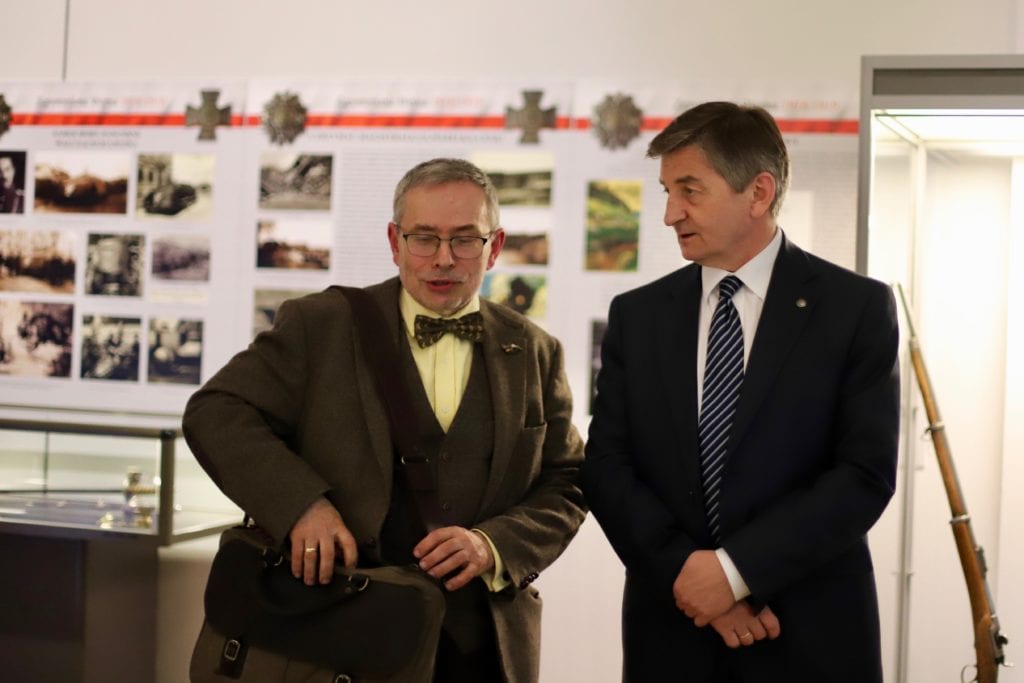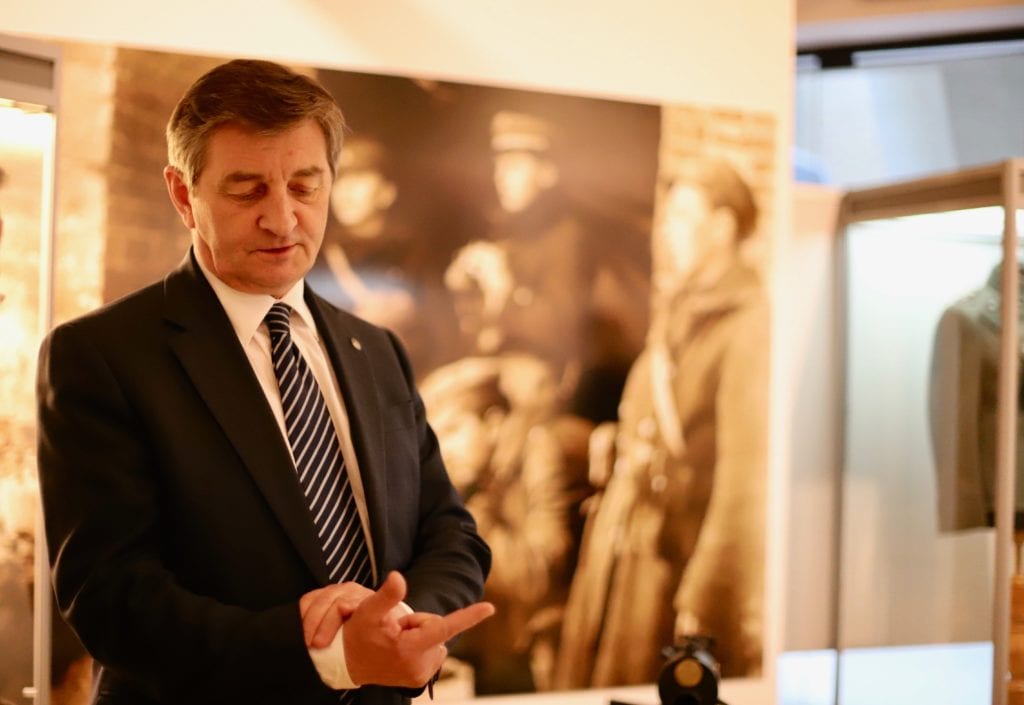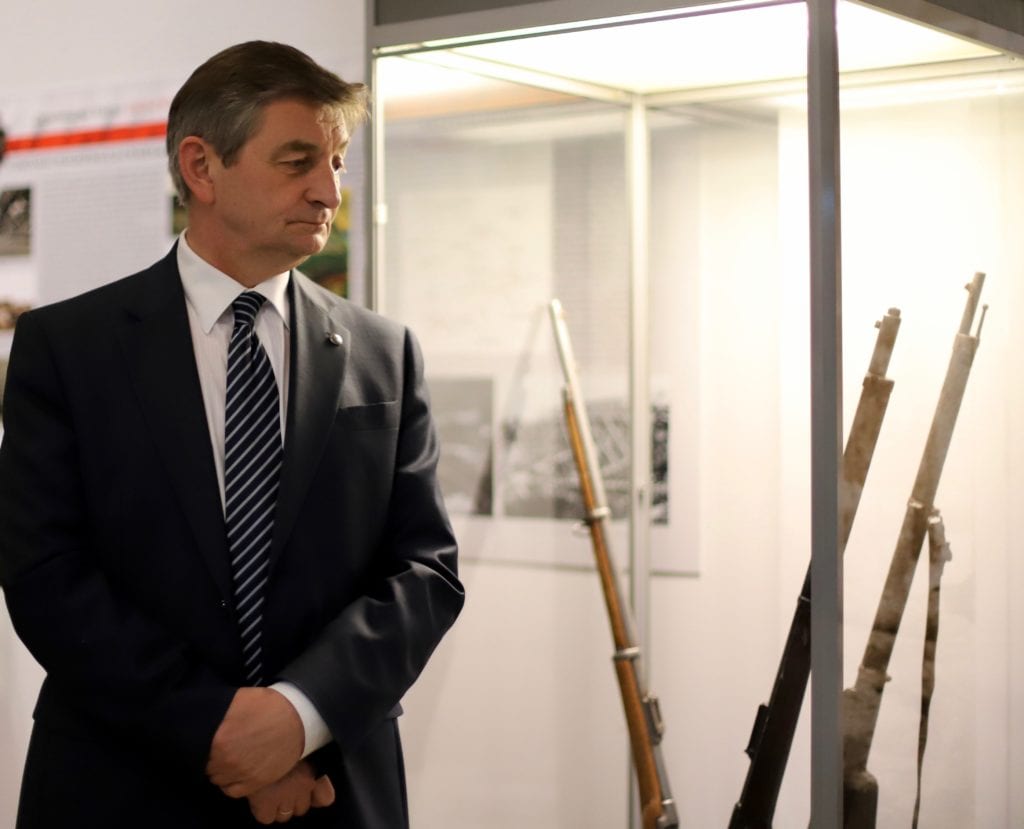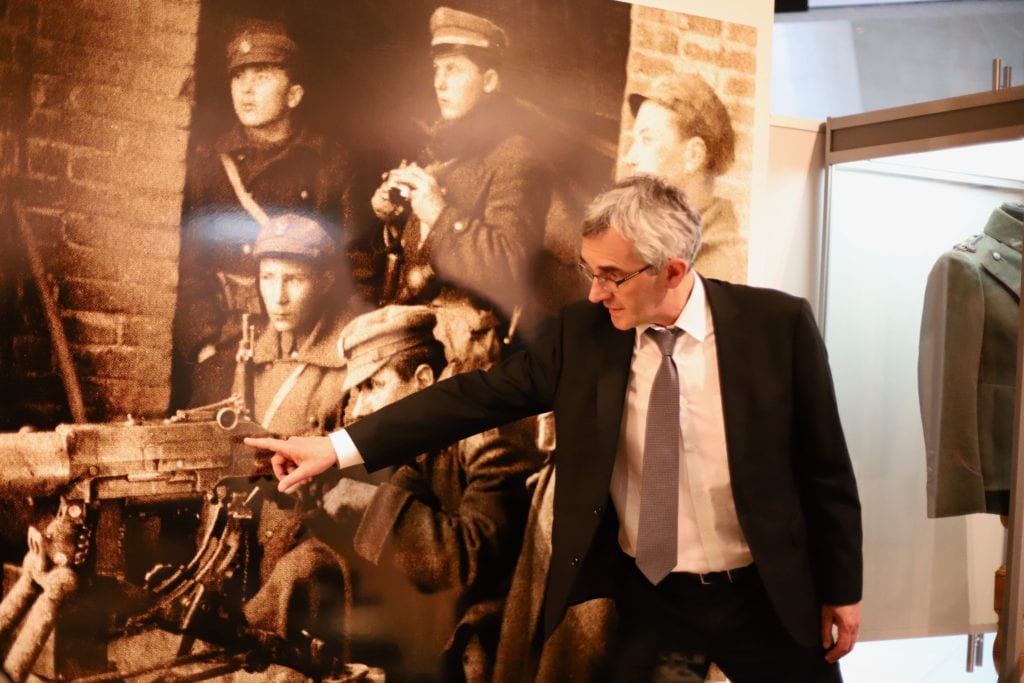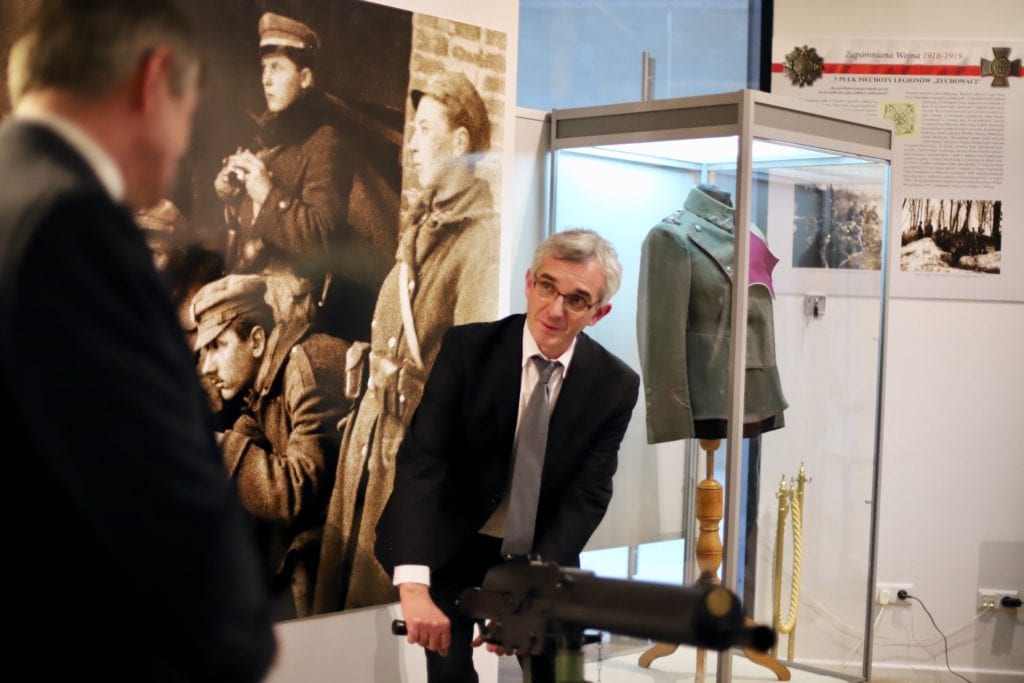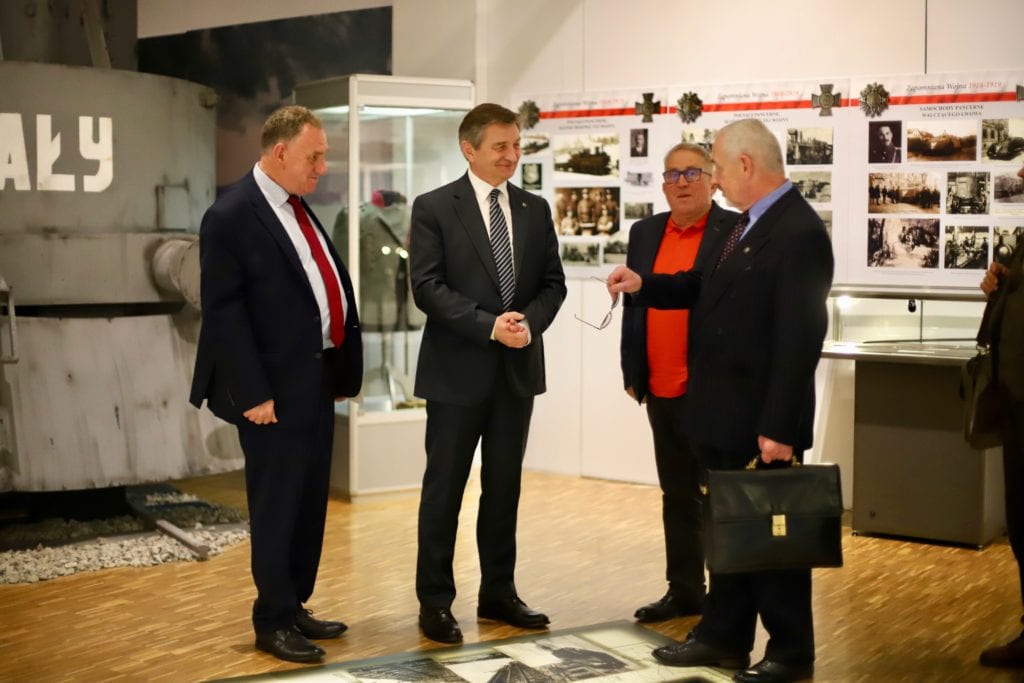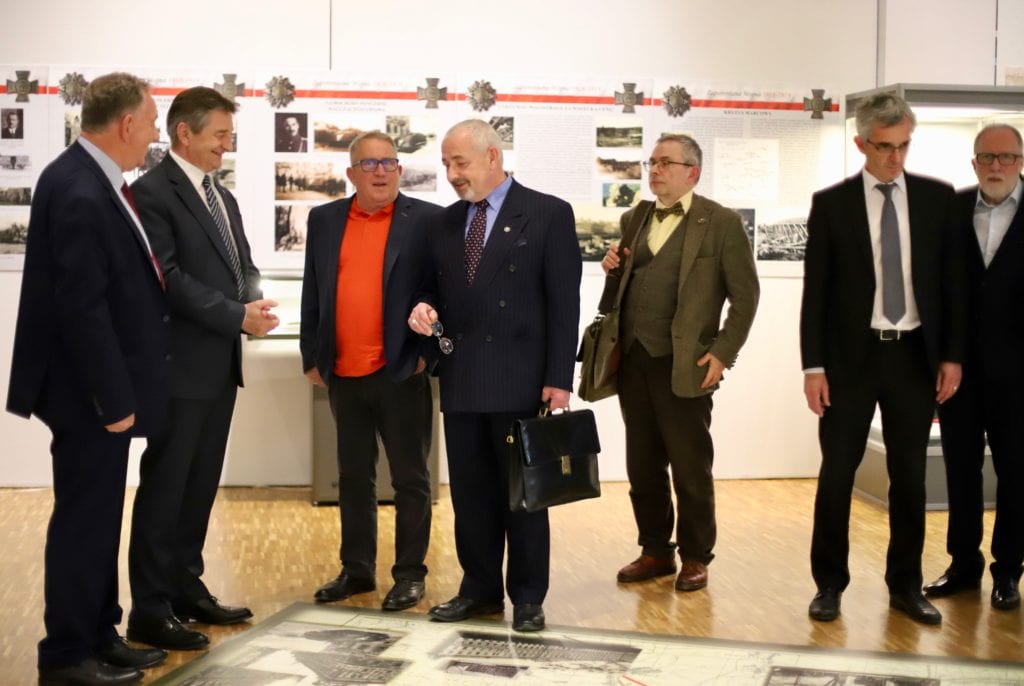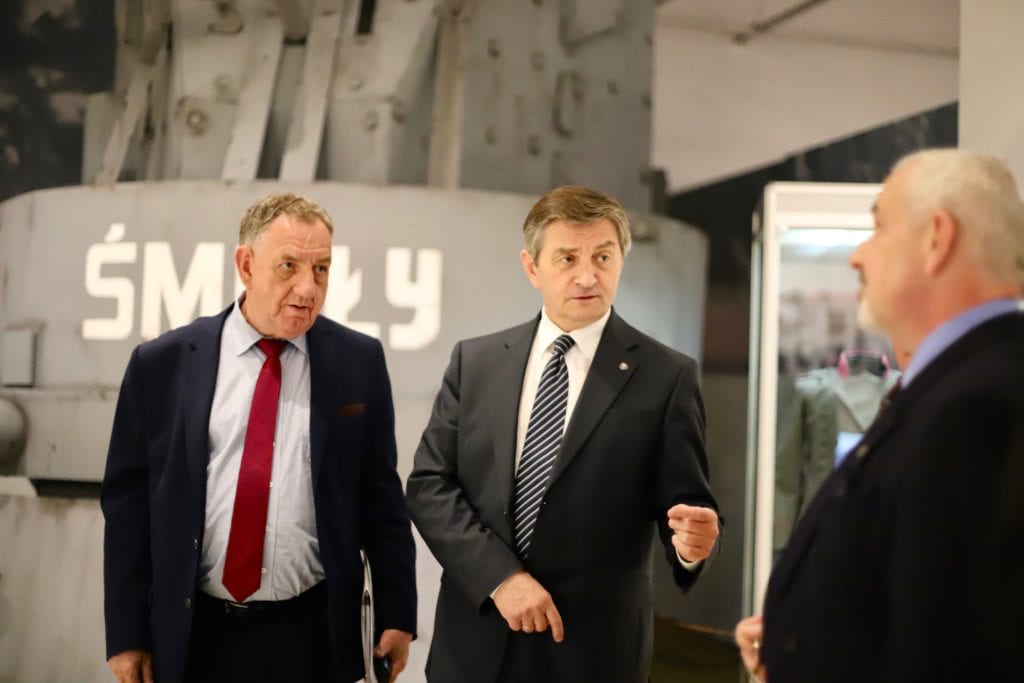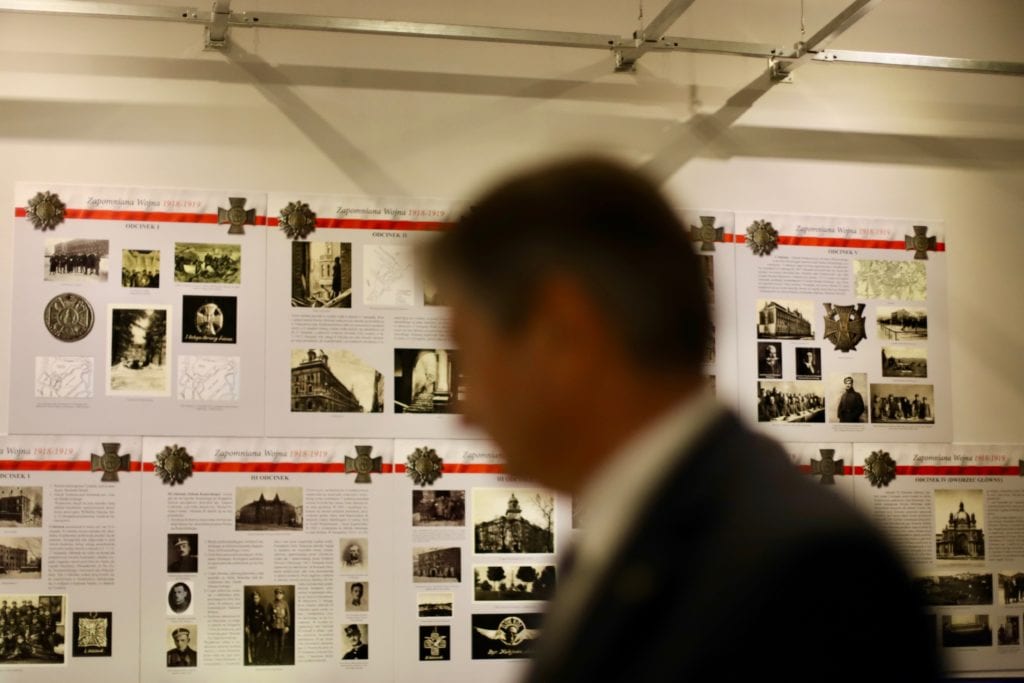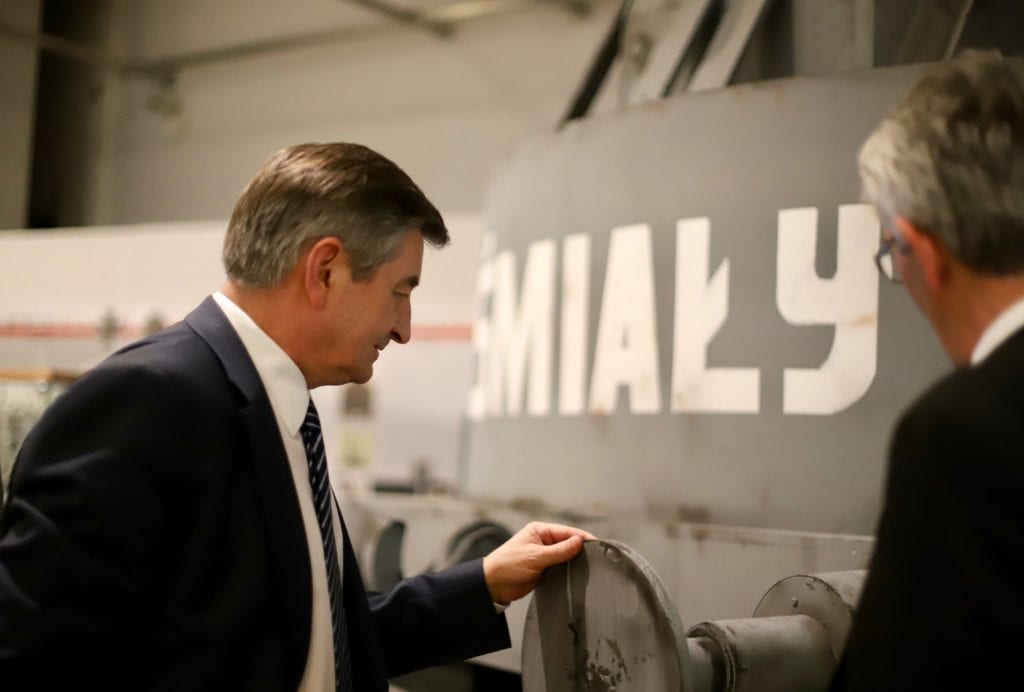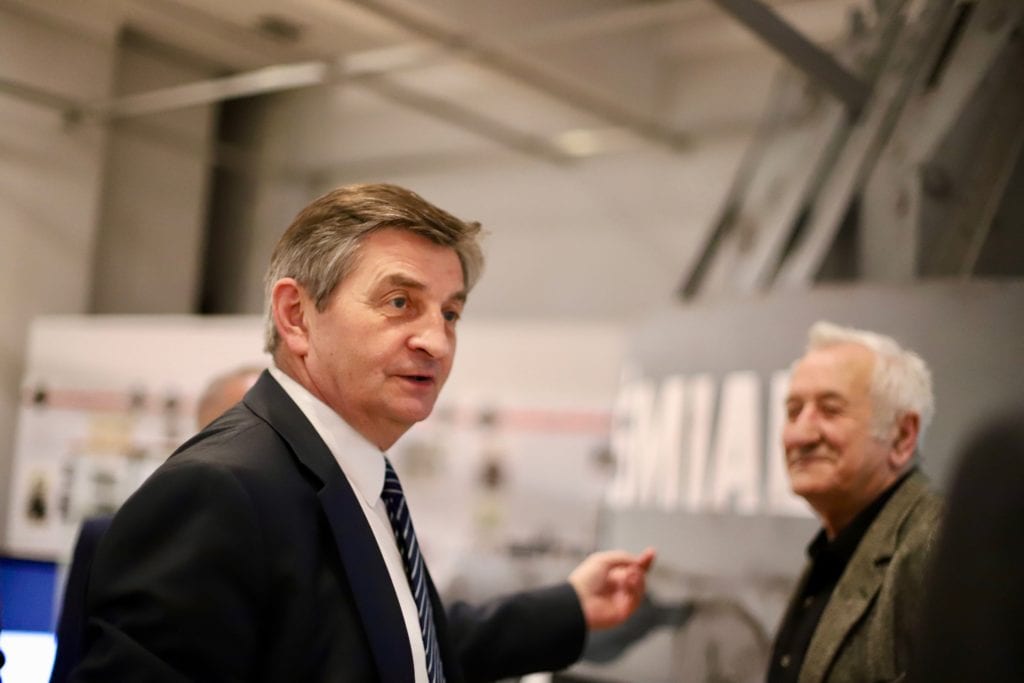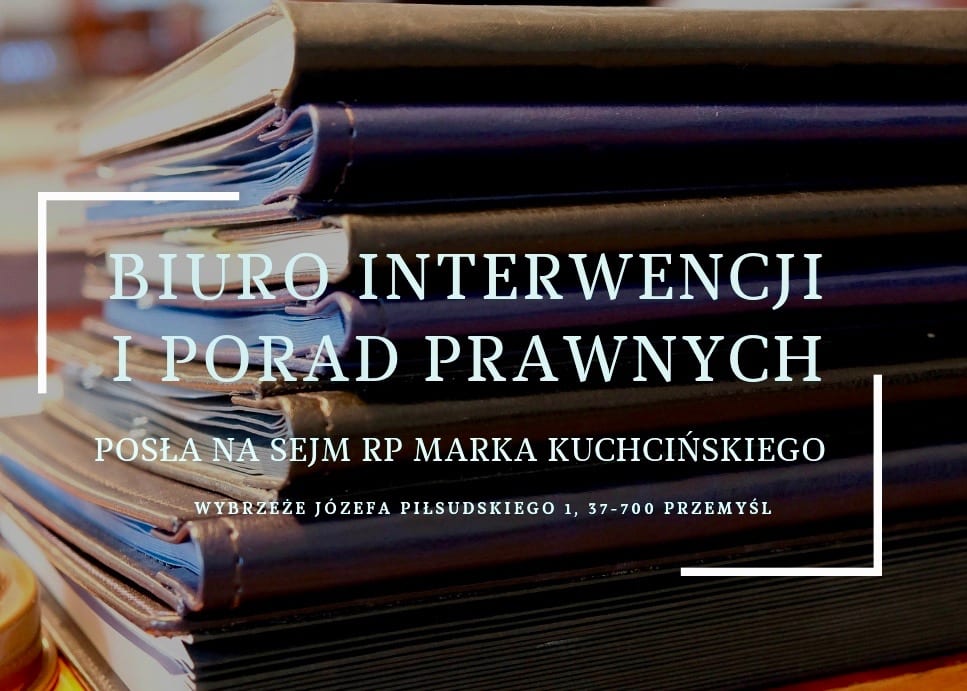Photo by Marta Olejnik
Forgotten or unknown?
This is the most frequently asked question accompanying the exhibition that can be seen from 5 April at the National Museum of the Przemysl Region. I think both. Somewhat forgotten, but largely unknown. It is known in the circles of historians and specialists, in wider social circles its knowledge rather revolves around the year 1918 and that November, when due to the Independence Day we remind ourselves of these events as if out of obligation. The 100th anniversary of this war obliged us to remind about it and, as far as it is possible, to make it better known. To arouse interest there is a 1:1 scale fragment of an artillery carriage of the "Bold" armored train, which has become the most visible accent of the exhibition. Second in size is the exposition of the Schwarzlose machine gun emplacement relating to a specific situation: soldiers of the 2nd Lviv Rifle Regiment in the battles on Persenowka. A number of artifacts from the Museum's collection of phaleristics, such as badges of particular sections of Lviv defense during the November fights: Central Station, Schramm Company, etc. legion uniforms, weapons and military equipment. A rich descriptive part on more than thirty plates serves to deepen the knowledge. It gives general knowledge about the conflict, while highlighting some episodes of the war, e.g. Women's Voluntary Legion, history of 1st and 2nd Lwów Rifle Regiments, Eaglets. Kamienie na Szaniec Lwowskie, Mother and Son about Aleksandra Zagórska and her son Jerzy Bitschan, all the sections of Lviv defense, armored cars of this conflict, elephants of this war or thing about armored trains, etc. A lot of attention is also given to the aviation of this war, especially the airfields of Levandivka and Hurechka near Przemyśl. Two monitors showing individual episodes of the war give you a chance to take a look at the rich iconography of this conflict. A special role is played by a large, 3×4 m map of Lviv, which is located on the floor. It gives an opportunity for a kind of walk around Lviv. The map shows individual sections of the Polish defense in the city, as well as the most famous battle sites, such as Persenkowka - the redoubt of death, the Mountain of Execution, Lewandowka, Piłsudski's Redoubt, the Citadel, the Railway Directorate, the National Seym, the Sienkiewicz School, Bem Square, the Cadet School, etc. Lviv Semper Fidelis is one of the three cities, along with Warsaw and Verdun, honored with the Order of Virtuti Militari. Its citizens were the collective heroes of this fratricidal war, which by no means ended in November. It was then that the first stage, lasting from November 1 to 22, and known as the "Ruthenian Month", ended. In the second stage, Ukrainian troops began a regular siege of the city, trying at all costs to break the communication line between Lviv and Przemysl. The third stage was the Polish offensive which lasted from April to July 1919. It resulted in a shift of the front to the Zbruch line after heavy fighting.
The exhibition is a tribute to the participants and victims of this war. It is an attempt to recall at least several places, e.g. Persenkovka, and people, e.g. Iwo Nałęcz Skałkowski, whose memory has unfortunately faded. In such a city as Przemyśl, whose historical connections with Lvov have always been very strong, the memory of this common past seems to be obvious. It seems to us that it can also be a good introduction to sightseeing in Lwów in the upcoming vacation season.
Lucjan Fac


